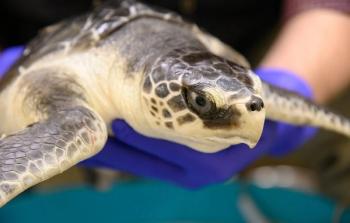
Cats: Winning the Weight Loss War
Developing a weight loss plan for feline patients involves owner education regarding a balanced diet, calorie reduction, portion control, and increased physical activity.
According to the 2017-2018
Cats gain weight when they consume more calories than they burn, often as a result of overfeeding by their owners or getting too little physical activity. Excess weight predisposes cats to serious medical issues, including type 2 diabetes and hypertension. Increasing physical activity, reducing caloric intake, and instituting portion control helps overweight and obese cats lose weight and improve their quality of life.
RELATED:
- Pet Obesity: Good News and Bad News
- Feline Obesity: The Elephant in the Exam Room
Veterinarians can play an integral role in making weight loss a reality for their feline patients. This article offers guidance on discussing weight loss and developing weight loss plans with cat owners.
Addressing the Elephant in the Room
A cat’s owner may not realize his or her cat is too heavy. Before broaching the topic of weight loss, gather information about the cat’s dietary history and physical activity. A dietary history should include the following information:
- Diet type (dry food, wet food, dry/wet mix)
- Brand of food
- Amount of food eaten per meal and per day
- Feeding style (free choice vs meals)
- Snacks
- Hydration habits
An owner may be unable to provide a complete dietary history. Nonetheless, dietary information, along with information about the frequency, duration, and type of physical activity, will help guide the conversation about weight loss.
When addressing a cat’s weight problem, maintain a tone of understanding and sensitivity, rather than judgment. The goal is for the owner to acknowledge the weight problem and be open to weight loss strategies for their cat.
Educating the Owner
Cat owners do not need to be nutrition experts to help their pets lose weight. However, having a basic understanding of feline nutrition will help owners institute dietary changes that facilitate weight loss. Share these key points with owners.
Balanced Diet
A balanced feline diet contains protein, fats, carbohydrates, vitamins, and minerals in proper proportions to meet a cat’s nutritional requirements. Because cats are obligate carnivores, a significant portion of their diet (35%-45% of total calories) should come from meat-based protein sources. Fats should comprise 30% to 40% of total calories, and 10% to 20% of calories should come from carbohydrates. Vitamin and mineral supplementation is not needed unless medically warranted.
Reduced Calories
Reducing caloric intake is essential for weight loss. A cat’s caloric needs depend on several factors, including age and activity level. According to APOP, a healthy, somewhat inactive 10-lb cat between ages 1 and 7 needs 180 to 200 calories per day to maintain a healthy body weight. Snacks should comprise no more than 10% of a cat’s daily caloric intake.
Portion Control
On average, a 5- to 9-lb cat should eat one-third to two-thirds cup of food per day, and a 10-to 14-lb cat should eat two-thirds to 1 cup of food per day, divided over 2 to 3 feedings. Because dry and wet foods have different caloric densities (dry food, 40-65 calories/oz; wet food, 25-30 calories/oz), portion sizes will depend on what type of food the cat prefers.
Importantly, portion sizes and serving sizes are different. Serving sizes are suggestions by the food manufacturer. Portion sizes are determined by a diet’s calorie count and a cat’s calculated caloric needs.
Hydration
Adequate hydration is important for good overall health. A cat’s daily water intake in milliliters should match the number of calories it consumes. Although some of this water intake comes from food, especially wet food, cats should have a constant supply of fresh water.
Food Labels
Food labels contain such information as an ingredient list, calorie counts and, importantly, the American Association of Feed Control Officials nutritional adequacy statement. This statement signifies that the food meets the minimum nutritional requirements.
Making the Weight Loss Plan
Work collaboratively with the owner to develop a weight loss plan that encompasses reduced caloric intake, strict portion control, and increased physical activity.
Reduce Caloric Intake
After calculating the reduced caloric intake for an overweight or obese cat, recommend a commercial feline weight loss diet that provides complete and balanced nutrition. Weight loss diets for cats are typically high in protein and low in fat. Wet foods have a lower caloric density than do dry foods and are thus a good choice for weight loss.
Portion Control
Portion control is essential for weight loss. Using the diet’s calorie count and the cat’s caloric needs, determine how much of the diet the cat should eat daily. Divide this total amount into 2 to 3 feedings. Rather than guesstimating portion size, owners can use a measuring tool, such as
Snacks also require portion control to ensure their calories don’t exceed 10% of total caloric intake.
Increased Physical Activity
Physical activity can be increased in many ways, including more daily playtime, scratching posts, and activities that encourage hunting. The cat’s overall medical condition should be considered when devising an exercise plan.
General Tips
Encourage the owner to keep a food diary. Also, schedule regular weigh-ins to monitor weight loss and adjust the plan as necessary. Once the cat reaches its ideal weight, encourage the owner to continue using portion control and regular physical activity to maintain the new weight. Finally, provide the owner with support throughout the weight loss process.
Bringing It Together
Although difficult to discuss, obesity is a serious problem in pet cats. A cat owner’s dedication to calorie reduction, portion control, and increased physical activity will go a long way toward helping their cat lose weight and become healthier.
Newsletter
From exam room tips to practice management insights, get trusted veterinary news delivered straight to your inbox—subscribe to dvm360.




